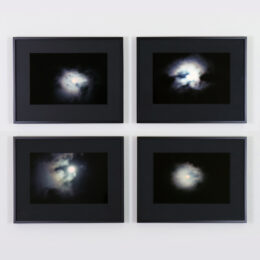

James Turrell is an American artist of French-Irish descent. He lives and works in Flagstaff, Arizona, as well as in Ireland. Many of his works are inspired by and dedicated to light. In 1965, he graduated in mathematics and psychology at Ponoma College in Claremont, California. Then he completed his training with an art diploma at the University of California at Irvine and a master’s in art at the Claremont Graduate School. In 1969, he projected his first light projections to Pasadena Art Museum, which lay the foundation of his work. Subsequently, the use of light as a material made an internationally renowned artist. In 1977, he purchased a volcanic crater in the Arizona desert (the Roden Crater), which he transformed little by little into a gigantic astronomical observatory.
Since the 1960s, Turrell’s installations are known as ‘perceptual environments’, created by natural or artificial lights. His art is a statement on the visual and intellectual perception of space. He solicits the senses of the spectators and plays with their perception through deceit. By doing so, he leads the spectators their own perceptions of space.
At the same time, the manipulation of natural light in architecture is one of his favourite motifs. James Turrell intervenes in architectural spaces, and gives in most of his works the illusion of a monochrome painting emerging from the darkness.